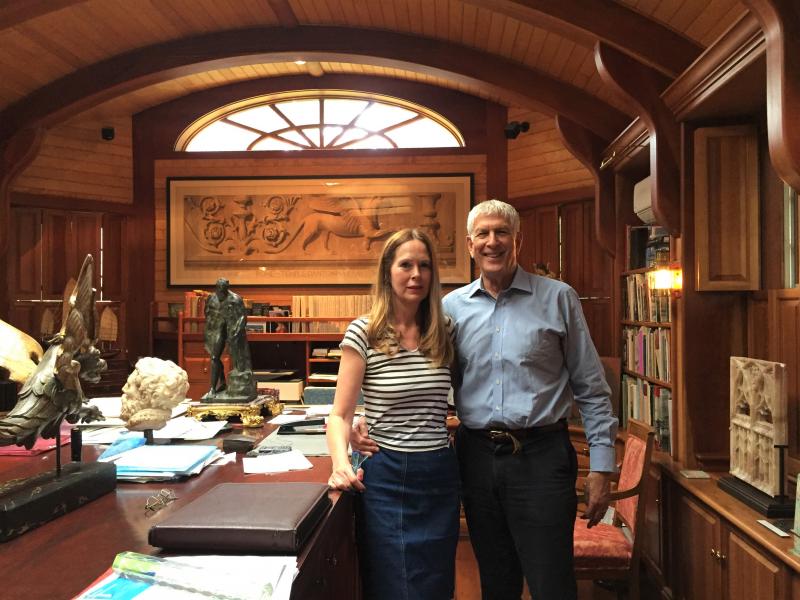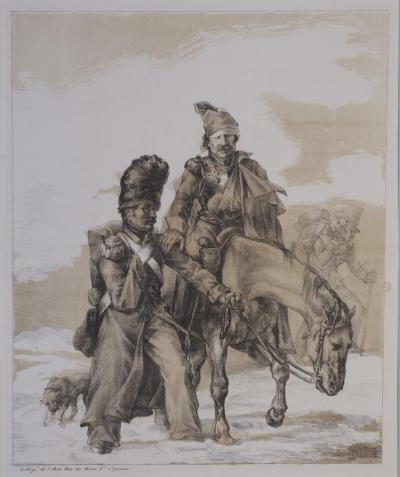Meet the South Dartmouth art dealers who sell to the Met
Dartmouth is often celebrated for its vibrant art community.
But the town also harbors a less well-known facet of the arts: Dealers Lesley Hill and Alan Stone, who sell graphic art pieces to museums around the globe from their well-appointed South Dartmouth home.
The husband-and-wife team have been successfully dealing in art for forty years with their firm, Hill-Stone, Inc.
“Our trade is sleepy in the sense that the things we sell are not well known to the general public, even those people who may from time to time visit museums,” said Stone.
Hill and Stone sell mostly European works on paper — prints, drawings, and watercolors — from the late 15th century to the early 20th century, with an emphasis on artwork created before 1800.
“We spend most of our time looking for things,” said Stone. “We are very much specialist dealers.”
The couple celebrated their 40th wedding anniversary just last week.
“I met my future wife at a lecture on Piranesi at Smith College in the fall of ‘78,” said Stone thoughtfully. “We were married on September 9 of 1979. And by then, already, we were well and truly launched — we were business partners as well as partners in life.”
For their fledgling business, Stone drew from his background in art history, while Hill’s background was in economics — but with plenty of art history courses thrown in.
“I loved it,” she said of the early years.
They moved from Northampton, Massachusetts down to New York City, where they ran the business for decades before coming up to South Dartmouth in 2013.
And after so many years, they are now well known in the art world, selling pieces by famous artists like Rembrandt, Canaletto and Gauguin to museums like the Metropolitan Museum of Art, the British Museum, the Louvre, and many others.
“It is a source of pride that museums and collectors come to us,” Stone said.
As every year, the duo will be showing some of their best pieces at the Fine Art Print Fair in New York in late October.
They are aware of how unusual “their world” is for outsiders, with catalogues listing prints that can sell for tens of thousands of dollars each.
“There are only a few of us in the world, who are what I’d call first-rate dealers,” said Stone. “Although we’re all friends, and like each other very much, we are all competitors. And we are all looking for ever more difficult-to-find objects.”
As for working with a long-time spouse, Hill said that it was very useful to have two minds when considering business decisions.
“We try not to disagree too often,” she added with a smile.
The pair decided to leave New York City six years ago, after the sudden death of a close friend, which Hill described as a “wake-up call” that it was time for a change.
They also noticed that the city was becoming an increasingly difficult place to live.
“When you live there, you don’t realize how rude people can be,” said Hill.
“That aspect of New York has changed for the worse,” agreed Stone. “People say ‘How can you leave a Park Avenue apartment?’ It wasn’t very difficult.”
Hill noted that Stone used to have to package up artwork on his knees in the bedroom due to lack of space. “Now he has his own workroom,” she said.
Their apartment also didn’t have enough space for the large number of reference books required for their work.
“The library was bursting at the seams,” Stone said. “We had piles of books on the floor.”
Hill was born in Connecticut and raised on the Cape, but they settled on South Dartmouth because Hill’s father grew up here and her family were deeply connected to the town.
“My grandfather was Bert Hill, and he ran the airport for Colonel Green at Round Hill,” she said.
And in a twist deemed “mysterious” and “wonderful” by the couple, they discovered that the house they now live in was owned by Hill’s ancestors in the 19th century.
“I’m a Howland and I’m a Potter, and they both owned this house,” she said.
“When we first walked in here, in the blizzard of early February in 2013, she didn’t say anything for a few minutes,” explained Stone. “Then she came to me and said, ‘This is my house.’”
“I just knew it,” said Hill. “I just knew this was the house. In a funny way, although I didn’t grow up here, it feels like home.”
“We’ve met some wonderful people here,” she added.
And professionally, her husband noted, they’ve been “very lucky.”
“It’s a large cooperative adventure that we are part of, with other dealers and with museum curators,” said Stone. “And that in itself is a source of considerable satisfaction.”
















